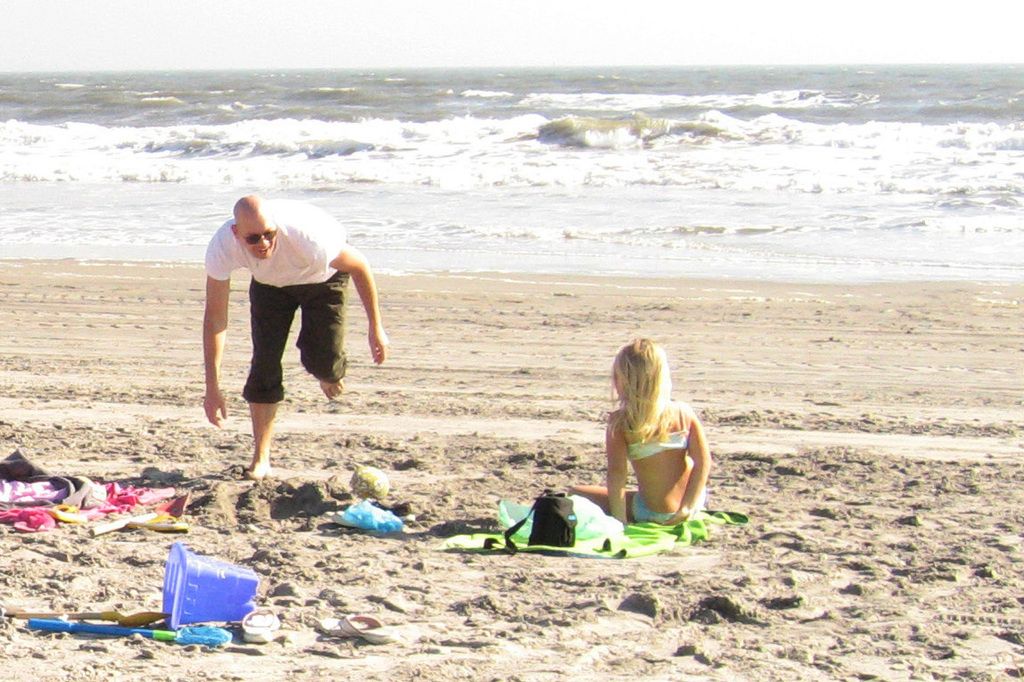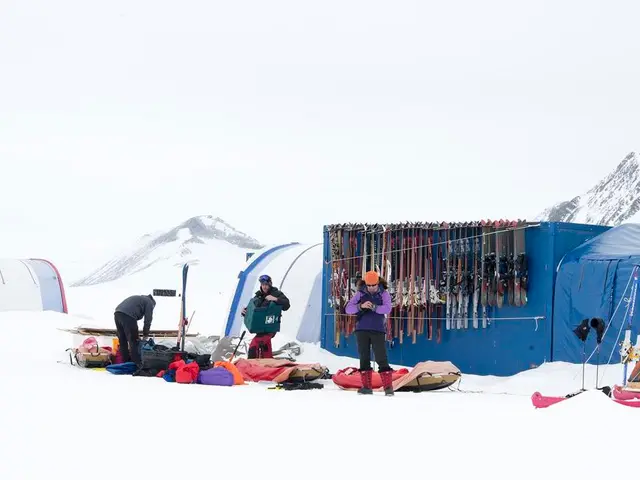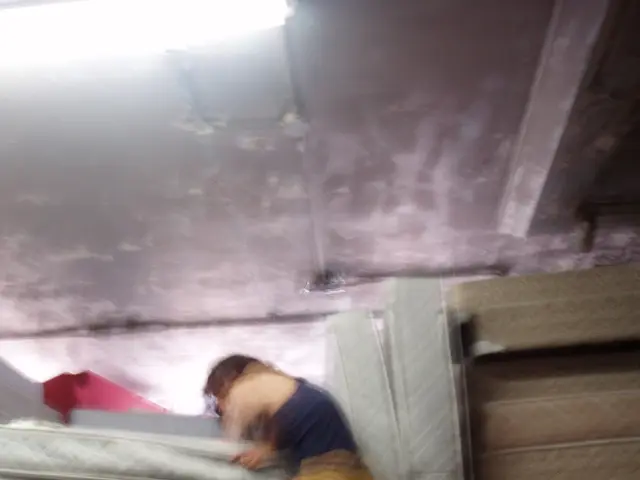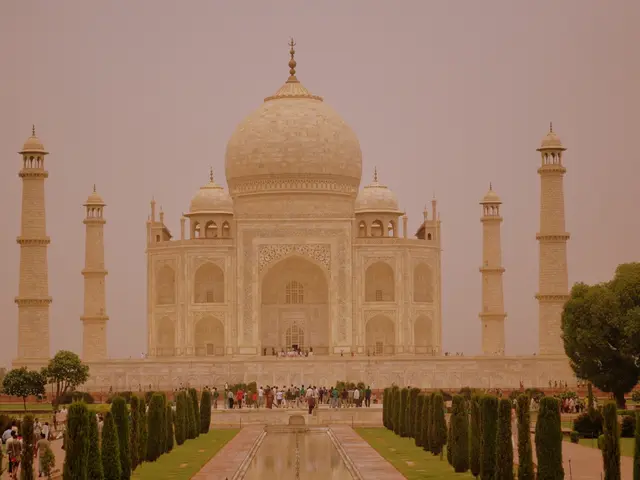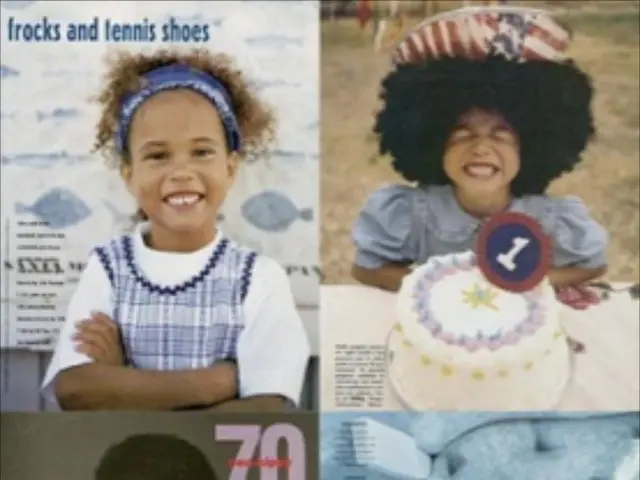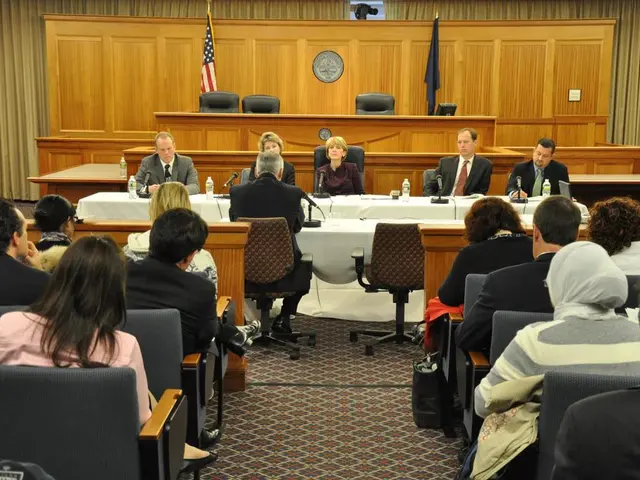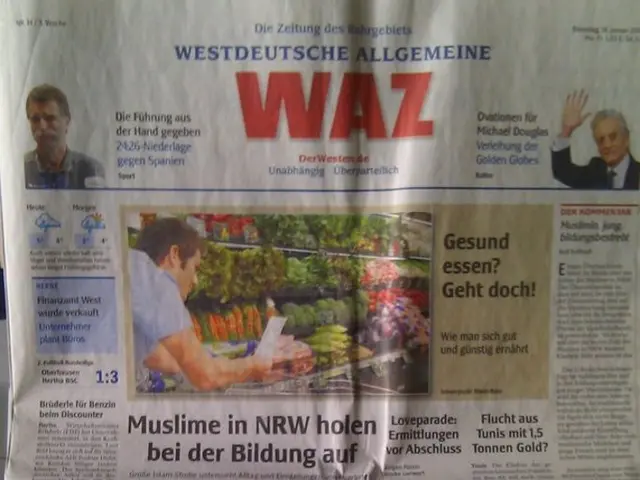Dance as a Form of Solidarity and Protest
Partying Through Turmoil: Dance as a Protest in War-Torn Kyjiw
mastering chaotic dancefloors while battling wars and adversity Image: Roman Khimei & Yarema Malashchuk, Video Installation by Luna Baumann Dominguez
Uncovering the revolution through subcultures amidst conflict, the Dance, Dance, Revolution exhibition exhibited in Hamburg until October showcased Kyjiw's electronic music scene's transformation during the Russian attack on Ukraine. Dancing to music, just hours after bombs rang out nearby in the homeland? The Ukrainian way: everyday life continues, and so does the music. One crucial question this exhibit aimed to answer: How can dance serve as a form of protest and solidarity?
Exhibition curator Anna Nowak describes dance as a way to stand up and combat life's contradictions, especially during wars and destruction. Dance has been used worldwide as a dynamic form of protest and a symbol of solidarity. For example, in Hamburg, activists took to the streets during the G20 political summit, protesting with a rave.
Bodies in Motion: A Symbol of Solidarity and Protest
Interviews with club owners, bartenders, and patrons illustrate the club scene during the war and served as inspiration for Nowak's presentation. Clubs like the famous techno club, "Club K41," adapted to the new conditions. Despite the limitations, the value of club culture remained unchanged for many.
"People must dance, and it's important because this is a mental battle over certain issues. I believe that this coming-together has always been society-binding," explains Nowak.
Professor Hanna Göbel, an urban anthropologist and ethnographic method specialist at the HafenCity University, has researched the exploration of dance practices in public spaces. She remarks on the body's versatility as a protest tool, such as on the street:
"Bodies are instrumentalized to express certain things. Protest forms can also emerge as a solidaristic form of resistance in everyday actions, in a wide range of urban practices."
Dance can help, even if it is not a cure-all. It can facilitate altered perception paradigms, helping to process feelings, thoughts, and experiences. "Maybe we can approach ourselves or the horrifying reality of war differently when we find shared practices of solidarity," says Göbel.
During conflict, people can reconnect with familiar routines by dancing in clubs. "Dance is not just a fleeting moment. It is bound to a practice that feeds on routines," explains Göbel.
Dance and Mourning: How Do They Fit Together?
A crucial connection in Nowak's exhibition is carnivals. They are often used to express political criticism. For example, a Carnival float in Cologne's 2023 Rosenmontagszug showcased a kiss between Putin and the Devil, a clear political statement conveyed during a festive occasion. The curator questioned the connection between carnivals and her exhibition: "Who has the right to celebrate, and is it morally acceptable within the context of a sense of duty?"
Celebrating during difficult times is not uncommon. In other cultures, dance rituals are used when bidding farewell to the deceased. "Why should one not dance and allow for this dimension of processing to happen?", asks Göbel. A good example is Mexico's "Day of the Dead." The celebration takes place the evening before All Souls' Day and serves to commemorate the deceased. There are massive parades, like in carnivals, where people sing and dance.
Bodies with War Experiences Dance Differently
The Dance, Dance, Revolution exhibit demonstrated how dance can function as a form of protest and solidarity. Represented through photography, videos, a sound installation, and artworks, the exhibit showcased the power of dance. Artist Anna Potyomkina addressed the themes of grief and dance in her video installation, observing people celebrating, dancing, and letting loose during the attack. How can this coexist? Potyomkina started viewing the body as a voice and featured tanzende people in Ukraine - techno and stroboscopic light in her video recordings. Potyomkina continues collecting footage to study the impact of the war on the dance styles of the people in Ukraine.
The dance style of an individual can change due to war, explains Göbel: "We have implicit communication structures in all types of movement that we do not have to compromise. Bodies that experience war or other traumatic experiences will change the collective knowledge pool and the way we, for example, navigate the urban space: thus, the dance as a solidaristic practice in the urban space can also change."
The body becomes an expression of solidarity and protest through dance. However, the influence of experiences remains unignored—they are reflected in the dance styles.
#### Luna Baumann Dominguez
born in 1996, Luna Baumann Dominguez has a fondness for German Bantams. This love has earned her many victories in the popular game "Hennen." She was born in Mönchengladbach but has moved 13 times. Internship at WDR in Cologne. Luna's Bachelor in Communication Studies started primarily to work for the campus radio in Münster. There, she co-founded the feminist show, "Equals," and interviewed reggae musicians. An instance of this was during a Dub-Inc concert in Paris, where the drummer even held the French press at bay for her. The people of the Ruhr region – big hearts, direct, always friendly – are missed by her already. Nickname: lun
- Der Friedhof Ohlsdorf - Ruhestätte oder Park?
- Gleiche Bühne für alle: Flinta an den Decks
- Die Finken werden flügge
- Ein Tag an der Eliteschule des Sports
- Mastering chaotic dance floors while battling wars and adversity is a testament to the resilience of the human spirit.
- In the midst of conflict, dance serves as a beacon of hope and solidarity.
- The exhibit, Dance, Dance, Revolution, highlighted the transformation of Kyjiw's electronic music scene during the Russian attack on Ukraine.
- Dance, as a form of protest, can challenge societal norms and foster unity.
- Club owners, bartenders, and patrons shared insights into the club scene during the war, inspiring curator Anna Nowak's presentation.
- Club culture, despite limitations, remains essential due to its mental therapeutic benefits.
- Professor Hanna Göbel, an urban anthropologist, emphasized the body's versatility as a protest tool.
- Protest forms can emerge from everyday actions, such as dancing in clubs.
- Dance can facilitate altered perception paradigms, helping to process feelings, thoughts, and experiences.
- Carnivals are used worldwide to express political criticism and serve as a form of solidarity.
- Celebrating during difficult times can help in processing feelings and thoughts about war.
- Examples of such celebrations include Mexico's "Day of the Dead."
- Dance rituals are used in some cultures to bid farewell to the deceased.
- Dance can function as a form of protest and solidarity, even during wartime.
- Artist Anna Potyomkina tackled themes of grief and dance through her video installation.
- Potyomkina's work showcases the power of dance during a time of conflict.
- The dance style of an individual can change due to war experiences.
- The body becomes an expression of solidarity and protest through dance.
- Luna Baumann Dominguez has a fondness for German Bantams and a background in Communication Studies.
- Baumann Dominguez co-founded the feminist show, "Equals," and interviewed reggae musicians during her college years.
- Dance, particularly techno, can serve as a voice for the people during wartime.
- Baumann Dominguez collects footage to study the impact of the war on the dance styles of the people in Ukraine.
- Personal growth and mindfulness are important aspects of dance therapy during times of conflict.
- Car maintenance can be considered a form of self-development, ensuring the smooth running of one's car.
- Productivity can be enhanced through physical activities like baking or cooking.
- Global cuisines can be explored through experimenting with various recipes.
- Online education can provide lifelong learning opportunities, such as skills training in sports analysis.
- Cultural travel allows one to experience different sports leagues, like the Champions League or Premier League, worldwide.
